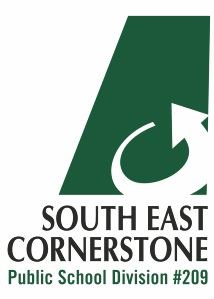Saskatchewan's education system is going through some watershed experiences heading into the new year. The South East Cornerstone Public School Division will definitely be influenced by what comes down the pipe of learning.
In fact, getting a clearer picture from the Ministry of Education as to what the new mandate will be is one of the major concerns of Cornerstone's director of education, Marc Casavant.
A switch of education ministers in midstream this year brought a few more question marks to the forefront.
"The funding model has still not been addressed, but it is being worked on, so I hold some optimism there," said Casavant during a year-ending interview.
"There is a new sector plan coming out, and they have been working on it all fall, and when it is complete, it will move the whole provincial education system in some manner, and with it will come some uncertainty. We need clear direction from the province, but then that has been a common theme for us for several months," Casavant added.
One other major concern that has increased the stress points for the director and those who work with him is the need for more clarity on funding for capital project needs and the entire state of school infrastructure across the province. There are dozens of very old school buildings that require serious attention over and above continual roof replacements.
"There are fewer people paying for it now, too," said Casavant, noting that while the provincial population may have increased and school enrollments have increased the actual ratepayers who are footing the bill, have not increased at the same pace.
"We continue to hear of provincial growth, but that hasn't translated into huge numbers in some instances. We have a lot of newcomers, but many of them are middle-aged people who are bringing their mothers and fathers over. There aren't a lot of school-aged children coming in, relatively speaking. There is growth in Saskatchewan, and we see it with added pre-kindergarten programs, so that's a good sign, and the fact we're grabbing the kids earlier and making them ready for early-year education is a good thing."
Referring to the latest edition of Sask Trends magazine, Casavant said the statistics indicate that Estevan, for example, is growing but "not a lot of people here are changing their permanent addresses to Estevan. The workers are coming in, but how many seats are being filled in the schools as a result?"
Casavant said until the items in the new sector plan roll out, there will be questions begging to be answered by all school divisions, both urban and rural.
"The sector plan is expected to drill down and arrive at a plan to increase graduation rates and improve reading and math scores and improve attendance and graduation rates for First Nations and Metis students. In the past, each division could go off and do what we wanted to do to address our priorities, knowing the standards we needed to achieve our goals without creating a negative situation. Now (the province) is trying to make meaningful use of the data we've received for instruction. How will we measure that?
"Local teachers have the skills, and we can assess those things, so we don't need to just add another layer for the sake of adding another layer. This plan has to serve a purpose and be meaningful for teacher and student. The student needs to know why things are being done in the classroom," Casavant said.
The director said the boards of trustees and administration also need to understand how the new capital funding model is going to work, especially as it relates to deteriorating rural schools that need major repairs or outright replacement. He said the model is fairly clear in the province's two major cities where the need for new schools is evident and older schools are monitored and replaced, but it appears as if the plan for rural school divisions may not be as clear.
Taken in total though, Casavant said he remains optimistic about the future with Cornerstone already having established itself as a provincial leader on several fronts with an innovative approach to problem solving.
The public school division in southeast Saskatchewan currently serves approximately 8,200 students within 38 school facilities and one cyberschool program with an outreach to the entire region as well as the province.




